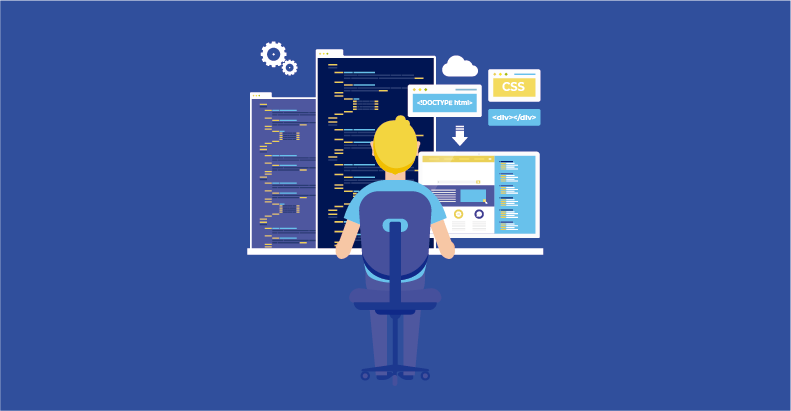Manual Testing: Everything You Need to Know

- May 4, 2023
- admin
In today’s world of software development, quality assurance (QA) has become an essential element for ensuring that products and applications are successful. QA is responsible for verifying that the software meets the users’ needs and functions as expected. One of the key approaches in this process is the use of manual evaluation.
In this article, we’ll explore the concepts of manual evaluation, including its different types and benefits, and also compare it with the automated approach.
What is Manual Testing?
Evaluating the software’s quality is essential to confirm that the application functions as intended and meets user expectations. Manual testing is an essential part of this process, often working alongside automated methods to ensure the quality of products.
Manual evaluation requires human involvement to assess the software’s performance. This method uncovers issues that might not be identified by automated tools. It involves examining the application directly, crafting test cases to address various scenarios, and identifying bugs or flaws. Testers execute these cases manually to verify how the application behaves and to ensure it meets its requirements.
Types of Manual Testing
Manual evaluation can take many forms depending on the aspect of the software being tested. Below are some of the most common techniques:
- Functional Testing
This checks the core features and functionality of the application to ensure it meets user specifications. - Usability Testing
This type assesses how user-friendly the application is, particularly the interface (UI) and overall user experience (UX). - Regression Testing
After updates or modifications are made, this type ensures that existing functionality remains unaffected by the changes. - Exploratory Testing
Here, testers explore the app’s functionality in an unscripted manner to identify potential issues not covered by predefined test cases. - Integration Testing
This ensures that different components of the application work together as intended, checking for proper integration. - System Testing
This tests the application as a whole to confirm it meets the specified requirements and functions well in a production environment. - Acceptance Testing
Performed to verify that the software satisfies the end user’s requirements and is ready for deployment. - Performance Testing
This checks the software’s performance under various conditions, helping identify potential issues related to workload handling. - Security Testing
This focuses on identifying vulnerabilities and ensuring the application is safeguarded against potential cyber threats.
Benefits of Manual Testing
Manual evaluation offers several advantages that make it an essential part of the overall software assurance process. Here are some key benefits:
- Cost-Effectiveness
This approach is ideal for smaller teams or projects with limited budgets, as it does not require investment in automation tools or frameworks. - Human Insight
Testers bring their critical thinking and expertise to the process, identifying issues that may be overlooked by automated tools, especially complex or nuanced problems. - Flexibility
Unlike automated approaches that require script creation and maintenance, manual evaluation allows testers to quickly adapt to new features or modifications, adjusting test cases as needed. - Ease of Learning
Manual evaluation doesn’t require advanced programming skills. Anyone with basic knowledge of quality assurance principles can participate in the process. - Real-World Scenarios
Manual evaluation is particularly valuable for assessing the software in real-world situations, such as examining the user interface or experience, which may not be fully captured through automated methods. - Early Bug Detection
Human testers can uncover issues early in the development cycle, preventing more significant problems from arising later.
Manual vs Automated Testing
Manual and automated methods are distinct, and each has its strengths. Below is a comparison of the two approaches:
- Execution
Manual evaluation involves human testers, while automation relies on specialized tools and scripts to execute test cases. - Speed
Automation is faster, handling large sets of repetitive tasks efficiently. On the other hand, manual evaluation is time-consuming, especially for large or complex applications. - Cost
Manual evaluation is generally more affordable, as it doesn’t require tools or specialized resources. Automation, however, demands upfront investment in tools and infrastructure. - Accuracy
Automated methods are highly accurate and consistent, as they eliminate the risk of human error. Manual approaches, while effective, are prone to mistakes and may yield inconsistent results. - Test Coverage
Automated tools excel at executing a large number of test cases quickly, making them suitable for testing repetitive actions or extensive datasets. Manual evaluation, however, can be more limited in scale. - Flexibility
Manual methods are more adaptable to changes, as they don’t require updating scripts. Automated testing, on the other hand, may require time and resources to modify test scripts as the software evolves.
Why Manual Testing Matters
Manual evaluation plays a critical role in the software development process that cannot be overlooked. It offers a human touch that complements automation, providing insights that machines may miss. This approach enables early bug detection, flexible adjustments, and a more comprehensive view of the user experience, which are crucial for ensuring high-quality software.
This method ensures that software applications meet the required standards, specifications, and expectations by offering a personal, human-driven evaluation. Moreover, it works hand-in-hand with automated methods, which are better suited for repetitive and large-scale testing but cannot replace the nuanced assessments performed by human testers. A balanced combination of both approaches helps ensure a thorough evaluation process and enhances software quality.
Summary
Manual evaluation is an essential part of ensuring software quality. It complements automated testing and adds value in areas such as flexibility, real-world assessment, and the human touch needed to catch issues that tools may miss. By using both manual and automated evaluation techniques, teams can ensure more comprehensive quality assurance and deliver higher-quality software products.











